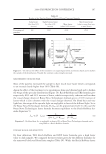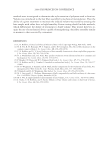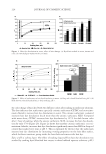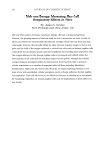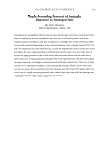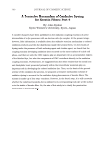JOURNAL OF COSMETIC SCIENCE 150 Figure 7. Dry combability for shampoos with an ether-based wax dispersion in comparison to benchmarks. Figure 6. Residual wet combability for shampoos with an ether-based wax dispersion in comparison to benchmarks.
2008 TRI/PRINCETON CONFERENCE 151 Figure 8. Deposition of waxes from the shampoos containing an ether-based wax dispersion. It is very likely that hair fi bers break at regions with cracks in the cuticle and outer cortex area. Such cracks will reduce the cross sections of the fi ber and thus increase the stress induced by combing. Wax particles acted not only as lubricants like silicones, but also fi ll these cracks, which in turn will reduce the stress by distributing the forces generated by the combing procedure. This hypothesis will be further explored in future work. REFERENCES (1) J. V. Gruber, L. Bouldin, and K. Lou, Can a topical scalp treatment reduce hair bulb extraction? J. Cos- met. Sci., 58(4), 369–374 (2007). (2) Y. K. Kamath and H. D. Weigmann, Fractography of human hair, J. Appl Polymer Sci., 27(10), 3809– 3833 (1982). (3) W. Hamburger, H. M. Morgan, and M. M. Platt, Some aspects of the mechanical behavior of hair, Proc. Sci. Sect. TGA., 14, 10–16 (1950). (4) N. Cooper, J. Short, J. Szadurski, and B. Turek, Assessment of the effect of hair care products on hair strengthening, Proc. 14th Cong. Int. Fed. Soc. Cosmet. Chem., 2, 1125–1133 (1986). (5) C. Robbins, Hair breakage during combing. I. Pathways of breakage, J. Cosmet. Sci., 57(3), 233–243 (2006). (6) C. Robbins, Hair breakage during combing. II. Impact loading and hair breakage, J. Cosmet. Sci., 57(3), 245–257 (2006).
Purchased for the exclusive use of nofirst nolast (unknown) From: SCC Media Library & Resource Center (library.scconline.org)














































































